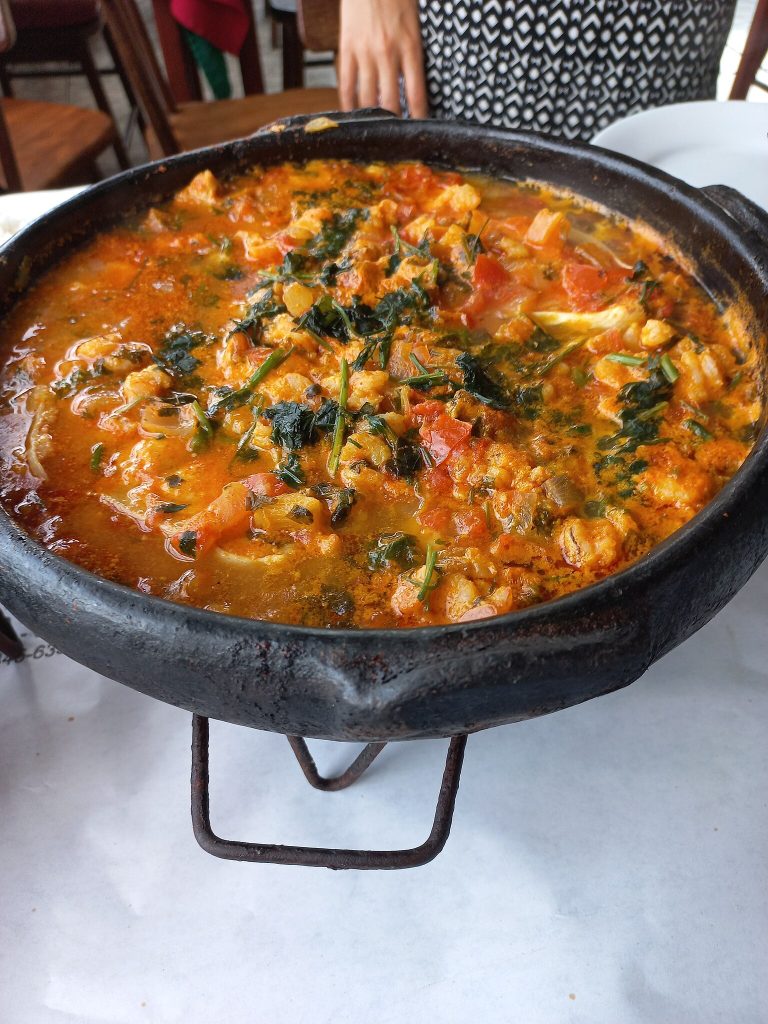The Best Fluffy Pancakes recipe you will fall in love with. Full of tips and tricks to help you make the best pancakes.
If you’re on the Mounjaro journey, you already know that what you eat can make a big difference. Mounjaro (tirzepatide) is transforming weight loss and blood sugar management for many people, but pairing it with the right foods is key to maximizing results. That’s where flavorful, nutrient-dense meals come in — and few cuisines do it better than Brazilian.
Known for its bold spices, lean proteins, and vibrant vegetables, Brazilian food offers the perfect combination of hearty satisfaction and health-conscious ingredients. It’s a cuisine rich in tradition yet adaptable enough to fit modern wellness goals — including those of Mounjaro users who are aiming for sustainable, delicious ways to stay on track.
In this article, we’ll explore how to create a Brazilian Mounjaro recipe that’s not only healthy and low in carbs but also bursting with the warmth and depth of South American flavor. Whether you’re looking to lose weight, maintain energy, or simply enjoy your meals more, this dish will satisfy without compromise.

2. What Makes a Recipe “Mounjaro-Friendly”?
Eating well on Mounjaro isn’t about strict diets or bland meals — it’s about choosing foods that support your body’s response to the medication. Since Mounjaro (tirzepatide) works by regulating blood sugar levels and helping control appetite, certain types of foods become more effective at keeping you full, energized, and on track with your health goals.
But what exactly defines a Mounjaro-friendly recipe?
- High in Lean Protein: Essential for preserving muscle mass during weight loss and promoting longer-lasting satiety, lean protein sources include chicken, turkey, seafood, eggs, and plant-based options like tofu or lentils.
- Low in Refined Carbs: Minimizing processed carbs such as white bread, pasta, and sugar helps regulate blood sugar. Instead, fiber-rich vegetables, legumes, or low-carb substitutes like cauliflower rice make better choices.
- Healthy Fats: Incorporating moderate amounts of healthy fats — like avocado, olive oil, or coconut milk — not only increases satiety but also aids nutrient absorption.
- Packed with Nutrients, Not Calories: Because Mounjaro naturally reduces appetite, it’s important to make every bite count. Nutrient-dense recipes rich in vitamins, minerals, and fiber fuel your body effectively without excess calories.
- Simple and Satisfying: Meals that are easy to prepare yet full of bold flavors encourage consistency and help resist the temptation of processed alternatives.
When designing a Brazilian-inspired dish for Mounjaro users, the goal is to celebrate flavor without sacrificing nutrition — exactly what the recipe in this article delivers.
3. Brazilian Ingredients That Fit the Bill
Brazilian cuisine is a beautiful fusion of indigenous, African, and European influences — bold, colorful, and rich in flavor. The best part? Many traditional Brazilian ingredients naturally align with Mounjaro-friendly eating, making it easy to enjoy delicious meals without straying from your health goals.
Here are some standout ingredients that fit the bill:
1. Lean Proteins
Brazilian meals often feature lean cuts of chicken, beef, or fresh fish, all excellent sources of protein to keep you full and support muscle health. Dishes like moqueca (a coconut fish stew) or grilled chicken with spices are great high-protein options.
2. Vibrant Vegetables
From collard greens (couve) to bell peppers, zucchini, and okra, Brazilian cuisine uses a wide range of low-starch vegetables. These are perfect for adding fiber, volume, and nutrients to your plate without loading up on carbs.
3. Healthy Fats
Healthy fats are common in Brazilian cooking — especially avocado, olive oil, and coconut milk. These fats not only add richness to meals but also help regulate hunger and improve nutrient absorption, making them ideal for Mounjaro users.
4. Herbs and Spices
Brazilian food shines with natural flavor boosters like garlic, onions, parsley, cilantro, paprika, and lime juice. These ingredients help enhance taste without added sugars or sodium, keeping meals exciting and satisfying.
5. Smart Carb Alternatives
While traditional Brazilian sides like rice, beans, and farofa (toasted cassava flour) are staples, they can be adapted. Cauliflower rice, zucchini noodles, or smaller portions of black beans can provide the satisfaction of a traditional meal with a lower carb load.
By mixing and matching these ingredients, you can easily create a meal that’s bold in flavor and balanced in nutrition — a true win for anyone navigating the Mounjaro lifestyle.
Link to a reliable nutrition source:
https://www.healthline.com/nutrition/coconut-milk
4. The Star Dish: Brazilian Mounjaro Recipe Overview
For this article’s featured recipe, we’re bringing a fresh, Mounjaro-friendly twist to a classic Brazilian favorite: Moqueca, a traditional fish stew that’s rich, comforting, and surprisingly light. Our version — Low-Carb Brazilian Moqueca — keeps all the bold, tropical flavors but trims down the carbs and boosts the nutrition, making it perfect for anyone following a Mounjaro-supported lifestyle.
This dish combines flaky white fish with vibrant bell peppers, tomatoes, coconut milk, and aromatic spices, all simmered together into a silky, satisfying stew. It’s naturally high in protein, packed with fiber-rich vegetables, and uses heart-healthy fats — all while staying low in calories and carbs.
Served over a bed of cauliflower rice instead of traditional white rice, this version allows you to enjoy every spoonful guilt-free. Best of all, it’s quick and easy to prepare — ready in under 30 minutes, with simple ingredients and minimal prep time.
Whether you’re meal-prepping for the week or making a flavorful dinner for the family, this Brazilian Mounjaro recipe hits all the marks: healthy, hearty, and full of soul.
5. Ingredients and Substitutions
This Low-Carb Brazilian Moqueca recipe is both simple and flexible, using whole ingredients that are easy to find and fit seamlessly into a Mounjaro-friendly meal plan. Below is a breakdown of what you’ll need, along with smart substitutions if you want to tweak the dish based on your taste or dietary preferences.
Main Ingredients:
- 1 lb white fish fillets (such as cod, halibut, or tilapia) – firm, mild fish that holds up well in the stew.
- 1 tablespoon olive oil – for sautéing and adding healthy fats.
- 1 small onion, thinly sliced.
- 3 cloves garlic, minced.
- 1 bell pepper, sliced (any color).
- 1 medium tomato, diced.
- 1/2 cup full-fat coconut milk – provides richness and healthy fat.
- 1/2 cup chicken or vegetable broth – to balance the creaminess.
- Juice of 1 lime – adds brightness and helps tenderize the fish.
- 1/4 cup chopped cilantro or parsley – for garnish and flavor.
- Salt and black pepper, to taste.
- 1/2 teaspoon smoked paprika (optional) – for a mild smoky flavor.
Optional Add-ins/Substitutions:
- Swap the fish for shrimp, scallops, or even tofu if you prefer.
- Add chopped spinach or kale during the last few minutes for an extra fiber and vitamin boost.
- Use light coconut milk to reduce fat/calories, or mix half coconut milk with broth for a lighter version.
- Cauliflower rice as a side – either store-bought or homemade – is a perfect low-carb alternative to traditional rice.
- For a spicier kick, toss in a pinch of red pepper flakes or diced chili.
This ingredient list not only supports your Mounjaro goals but also leaves room for creativity. It’s all about building flavor while staying aligned with your wellness journey.
6. Step-by-Step Cooking Instructions
This Low-Carb Brazilian Moqueca is as easy to make as it is delicious. With just one pan and under 30 minutes, you’ll have a flavorful, Mounjaro-friendly meal ready to enjoy. Here’s how to bring it all together:
Step 1: Prepare the Fish
- Cut your white fish fillets into large chunks (about 2–3 inches).
- Squeeze lime juice over the fish, season with salt and pepper, and let it marinate while you prep the rest — about 10 minutes.
Step 2: Sauté the Aromatics
- In a large skillet or saucepan, heat the olive oil over medium heat.
- Add the sliced onions and sauté for 2–3 minutes until softened.
- Stir in the garlic, bell peppers, and diced tomatoes. Cook for another 3–5 minutes, letting the vegetables release their flavors.
Step 3: Add Coconut Milk and Broth
- Pour in the coconut milk and broth. Stir well to combine.
- Sprinkle in paprika (if using), and adjust seasoning with more salt and pepper if needed.
- Bring the mixture to a gentle simmer.
Step 4: Cook the Fish
- Gently add the marinated fish pieces into the pan, nestling them into the sauce.
- Cover the pan and let it simmer for 8–10 minutes, or until the fish is cooked through and flakes easily with a fork. Be careful not to overcook.
Step 5: Finish and Serve
- Once the fish is done, remove from heat and sprinkle with chopped cilantro or parsley for a fresh, herbal finish.
- Serve hot over a scoop of warm cauliflower rice or alongside steamed low-carb veggies.
Optional Meal Prep Tip:
Let the stew cool and portion into meal-prep containers with cauliflower rice. It keeps well in the fridge for up to 3 days and reheats beautifully.
7. Nutrition Breakdown and Benefits
This Low-Carb Brazilian Moqueca isn’t just tasty — it’s built to nourish your body and complement the effects of Mounjaro. By combining high-quality protein, healthy fats, and nutrient-dense vegetables, this dish helps stabilize blood sugar, support weight loss, and keep you full and energized.
Here’s an approximate nutrition breakdown per serving (based on 4 servings total, without cauliflower rice):
- Calories: ~320
- Protein: ~30g
- Fat: ~20g
- Carbohydrates: ~8g
- Fiber: ~2g
- Net Carbs: ~6g
(Note: Nutrition values may vary depending on exact ingredients and portion sizes.)
Why This Recipe Works for Mounjaro Users:
- High Protein Content: Protein promotes satiety, preserves lean muscle mass, and keeps hunger at bay — a perfect pairing with Mounjaro’s appetite-regulating effects.
- Low in Carbs and Sugar: Helps stabilize blood glucose levels, which is especially important for users managing type 2 diabetes or insulin resistance.
- Healthy Fats from Coconut Milk and Olive Oil: Supports hormone function and nutrient absorption, while also providing satisfying richness.
- Fiber and Micronutrients: The peppers, tomatoes, and herbs contribute fiber, antioxidants, and vitamins like C and K — all essential for overall health.
This recipe proves you don’t need to sacrifice flavor for function. It’s a perfect example of how cultural cuisine can be adapted for modern health goals — without losing the soul of the dish.
8. Final Tips and Variations
Add a Little Heat or Keep It Mild
If you enjoy a bit of spice, you might want to consider adding diced chili peppers, red pepper flakes, or a splash of hot sauce to give the stew a spicy kick. On the other hand, if you prefer milder flavors, smoked paprika and fresh garlic provide plenty of depth without overwhelming heat.
Protein Alternatives for Every Preference
This recipe is quite versatile when it comes to protein. For instance, shrimp or scallops create a delightful seafood medley, while skinless chicken thighs or breasts make it heartier. Additionally, tofu or tempeh work well for plant-based diets — just pan-sear them first to add a satisfying texture.
Boost Your Veggies
To increase the nutritional value, try stirring in chopped leafy greens like spinach or kale during the last few minutes of cooking. Moreover, other low-carb vegetables such as zucchini, mushrooms, or okra complement the stew nicely, adding flavor and volume.
Adjust the Creaminess
You can customize the texture by tweaking the coconut milk and broth ratio. For a richer, creamier stew, use full-fat coconut milk. Conversely, light coconut milk or unsweetened almond milk with extra broth results in a lighter, brothier finish.
Meal Prep Made Easy
This dish is excellent for meal prep since the flavors deepen over time. Therefore, portion it with cauliflower rice into airtight containers and refrigerate for up to three days. It reheats beautifully and tastes just as good, if not better.
Perfect Pairings and Finishing Touches
While cauliflower rice is a great low-carb side, you might also enjoy sautéed collard greens, roasted zucchini, or a fresh green salad with lime vinaigrette as delicious alternatives. Finally, finish the dish with fresh garnishes like chopped cilantro or parsley, a squeeze of lime, and a drizzle of extra virgin olive oil for added richness and healthy fats.





